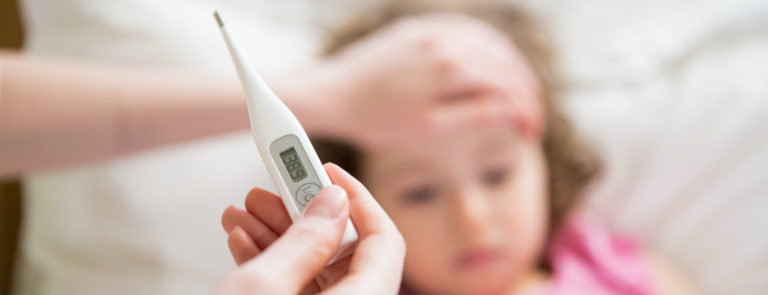15% off £25 OR 20% off £35
What is a normal body temperature?

What is a normal temperature?
| Age | Body temperature normal range |
Fever temperature range
|
Other signs of illness include | How to take their temperature | Precautions |
| Baby (age 0-2) |
Around 36.4C (normal temperature for a baby can vary slightly from baby to baby – it’s best to take your baby’s temperature regularly to find out what’s normal for them).1 |
37.5C or above2 |
Hotter to touch on their forehead, back or stomach. Sweaty, clammy or have flushed cheeks.3 |
Always take the temperature either under the armpit (axillary) for babies. Place the tip of the thermometer under the baby’s armpit and gently hold them still until it beeps.4 |
Fever in babies under 6 months of age is rare. If your baby is younger than 3 months and has a fever of 38C or above or is between 3-6 months of age with a fever of 39C or above, seek medical attention immediately.5 |
| Child (2-10) |
Around 36.4C (normal kids’ temperature can vary slightly from child to child – it’s best to check your child’s temperature occasionally to find out what’s normal for them). |
38C or above6 |
Hotter to touch on their forehead, back or stomach. Sweaty, clammy or have flushed cheeks.7 |
It’s best to take the temperature under the armpit (axillary). You could also use an ear thermometer (tympanic), but don’t allow your child to do this unsupervised.8 |
Fevers in children are common and usually nothing to worry about. If your child’s temperature lasts more than 5 days or is accompanied by a rash, see your child’s GP.9 |
| Young person (10-18) | 36.5C - 37.2C considered normal range10 | 38C or above11 |
Hotter to touch on their forehead, back or stomach. Sweaty, clammy or have flushed cheeks. They have other symptoms, such as shivering (chills), sweating or warm, red skin.12 |
Older children can be shown how to take their own temperature. This can be armpit (axillary), ear (tympanic) or by mouth.13 |
If the temperature lasts more than 5 days or is accompanied by a rash, see your child’s GP. |
| Adult (18-65) | 36.6C – 37.2C considered normal range14 | 38C or above15 |
Your chest or back feel hotter than usual You have other symptoms, such as shivering (chills), sweating or warm, red skin16 |
As above. | Contact your GP if your fever doesn’t improve after 3 days, the fever is over 40C, or if you’re having trouble breathing.17 |
| Older adult (65+) | 36C18 | 37.8C or above | As above. | As above. | Older adults tend to have a slightly cooler core body temperature. |
What can affect body temperature?
1. Your gender
2. Thyroid conditions
3. Time of day
4. Activity levels
5. Illness
How to take your temperature
- By mouth: to take a temperature by mouth, clean the digital thermometer tip with soap and cold water before drying and placing under the tongue, towards the back of your mouth. Hold until it beeps, and the reading will be ready.
- By ear (tympanic): Instructions vary, but they involve placing the tip of the thermometer (covered with a hygienic cap) snugly inside the ear canal and waiting for the result. Normal ear temperature will read up to 1C higher than temperature taken by mouth.
- By armpit (axillary): Place the tip of the thermometer in the crease of your armpit, holding it firmly and tight against your body until the thermometer beeps.
Fever Q&A
Last updated: 1 March 2024
- https://www.nhs.uk/conditions/fever-in-children/
- https://www.nhsinform.scot/self-help-guides/self-help-guide-fever-in-babies
- https://www.nhs.uk/conditions/fever-in-children/
- https://www.nhs.uk/conditions/pregnancy-and-baby/how-to-take-your-babys-temperature/
- https://www.nhsinform.scot/illnesses-and-conditions/infections-and-poisoning/fever-in-children
- https://www.nhs.uk/conditions/fever-in-children/
- https://www.nhs.uk/conditions/fever-in-children/
- https://www.nhs.uk/conditions/pregnancy-and-baby/how-to-take-your-babys-temperature/
- https://what0-18.nhs.uk/parentscarers/worried-your-child-unwell/fever-high-temperature
- http://www.choosewellmanchester.org.uk/self-care/self-care-information-for-adults/taking-your-temperature/
- http://www.choosewellmanchester.org.uk/self-care/self-care-information-for-adults/taking-your-temperature/
- https://www.nhs.uk/conditions/fever-in-adults
- https://www.nhs.uk/common-health-questions/accidents-first-aid-and-treatments/how-do-i-take-someones-temperature/
- http://www.choosewellmanchester.org.uk/self-care/self-care-information-for-adults/taking-your-temperature/
- http://www.choosewellmanchester.org.uk/self-care/self-care-information-for-adults/taking-your-temperature/
- https://www.nhs.uk/conditions/fever-in-adults
- https://www.nhs.uk/conditions/fever-in-adults
- https://pubmed.ncbi.nlm.nih.gov/16398904/
- https://www.bmj.com/content/359/bmj.j5468
- https://www.nhs.uk/conditions/contraception/natural-family-planning/
- https://www.btf-thyroid.org/myths-and-misunderstandings-about-thyroid-disease
- https://www.ncbi.nlm.nih.gov/books/NBK331/
- https://www.nhsinform.scot/illnesses-and-conditions/infections-and-poisoning/fever-in-adults
- https://www.nhs.uk/common-health-questions/accidents-first-aid-and-treatments/how-do-i-take-someones-temperature/
- https://www.healthlinkbc.ca/health-topics/




.png)










